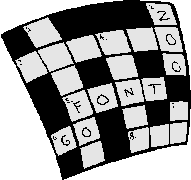|
LIFE SCIENCE |
Chapter 6
_______________--a process by which organisms with traits best suited to their environment are more likely to survive and reproduce; includes concepts of variation, overproduction, and competition
_______________--study of embryos and their development
_______________-any variation that makes an organism better suited to its environment
_______________--early humans that likely evolved from Cro-Magnons
______________--group of organisms that share similar characteristics and can reproduce among themselves producing fertile offspring
_______________--model describing evolution as a slow process by which one species changes into a new species through a continuing series of mutations and variations over time
_______________--model describing the rapid evolution that occurs when mutation of a few genes results in a species suddenly changing into a new species
_______________--structure, such as the human appendix, that doesnít seem to have a function and may once have functioned in the body of an ancestor
_______________--humanlike primate that appeared about 4 million to 6 million years ago, ate both plants and meat, and walked upright on two legs.
_______________--body parts that are similar in structure and origin and can be similar in function
_______________--change in inherited characteristics over time
_______________--a type of rock, such as limestone, that is most likely to contain fossils and is formed when layers of sand, silt, clay, or mud are cemented and compacted together of when minerals are deposited from a solution
_______________--group of mammals including humans, monkeys, and apes that share characteristics such as opposable thumbs, binocular vision, and flexible shoulders
_______________--inherited trait that makes an individual different from other members of the same species and results from a mutation in the organismís genes
_______________--element that gives off a steady amount of radiation as it slowly changes to a non-radioactive element
